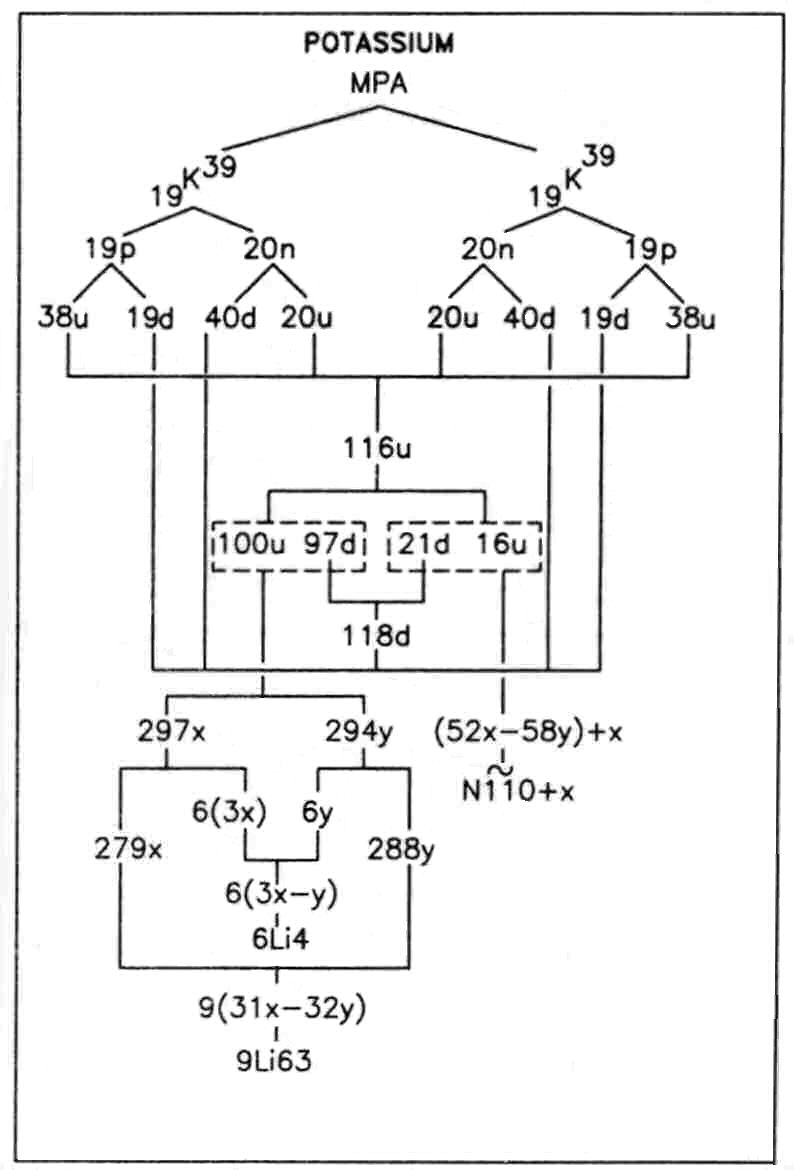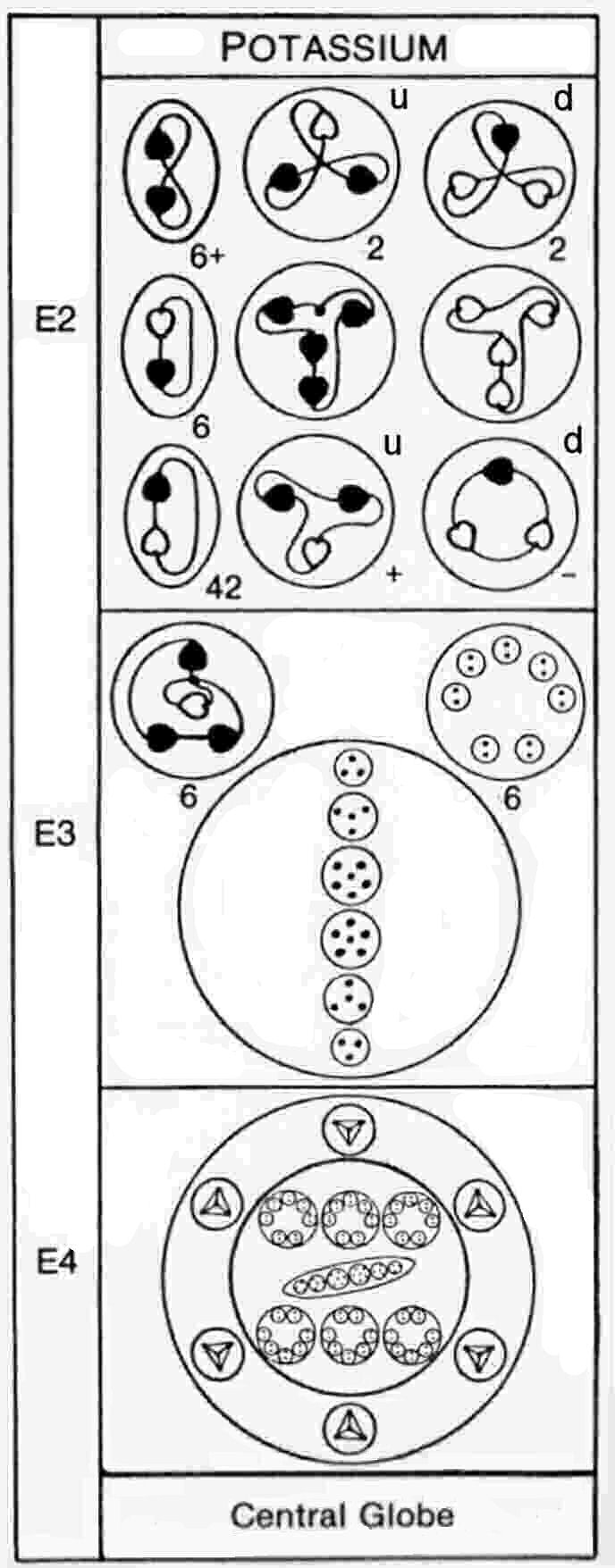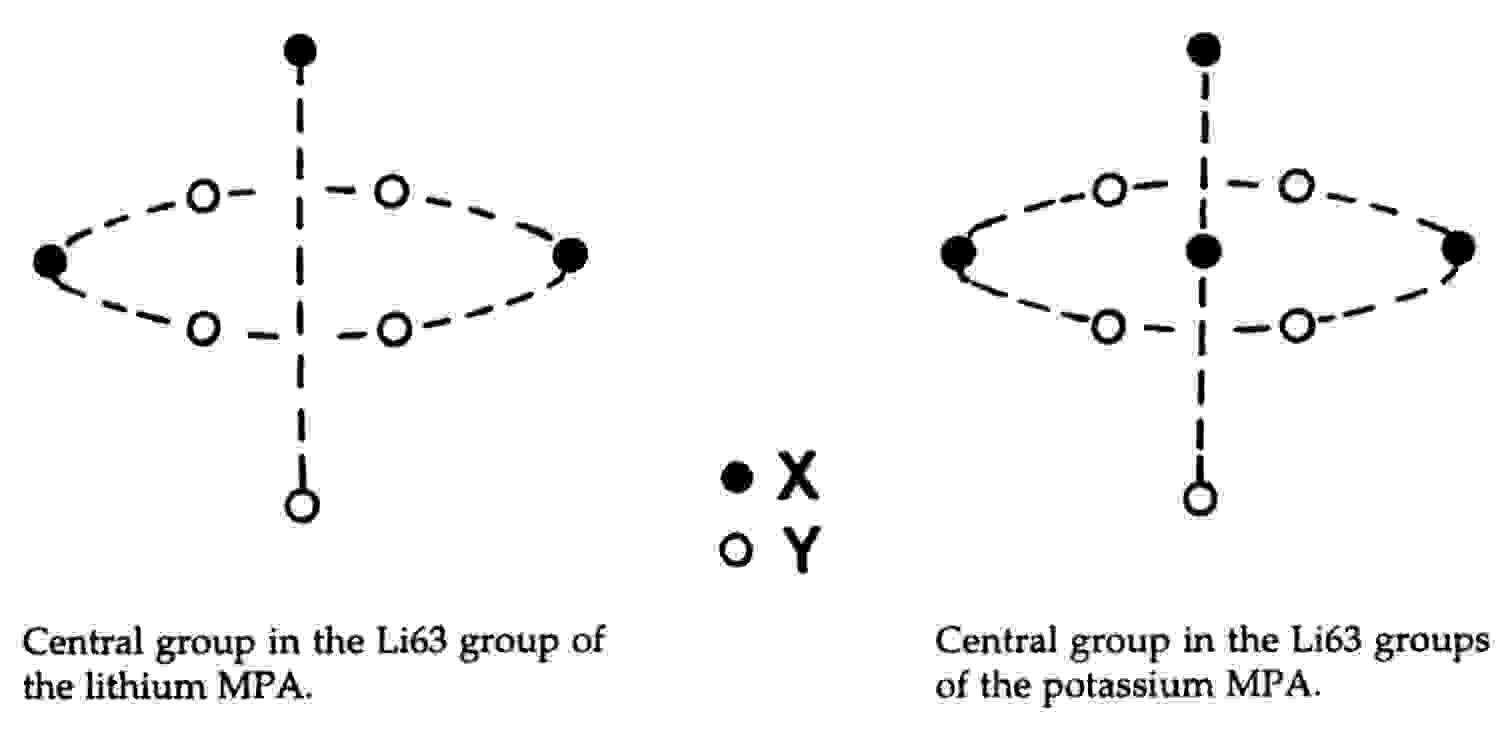
The Potassium MPA

Nine spikes containing Li63 groups (as found in the lithium MPA) project outwards from a central sphere containing an N110 group, which is surrounded by six spheres enclosing Li4 groups.
Potassium MPA = (N110 + 6Li4) + 9Li63.
The potassium MPA is formed from two K39 nuclei, which contain 702 subquarks — one more than the number of UPAs. Sixteen u quarks and twenty-one d quarks break up into fifty-three X subquarks and fifty-eight Y subquarks, which recombine to form the particles in the N110 group. According to the analysis of the fluorine MPA, the N110 group can consist of either fifty-eight X subquarks and fifty-two Y subquarks or fifty-two X subquarks and fifty-eight Y subquarks — the mirror state N110′. An extra X subquark should be in the N110 group,


which is actually an N110′. It is most probably in one of the particles inside the long ovoid at the centre of the balloon-shaped N110, as the numbers and configurations of the other bodies preclude an extra UPA in just one of them. This accounts for the discrepancy of −1 between the number of UPAs and the predicted 702 subquarks in the MPA. Such small variations in generic groups of UPAs could have gone unnoticed by Besant & Leadbeater because they did not bother to examine in detail every such group, if they had countered it on previous occasions. They did, however, anticipate this possibility, remarking: "In the heavier elements, such as gold, with 3,546 Anu, it would be impossible to count each Anu without quite unnecessary waste of time, when making a preliminary investigation. Later, it may be worth while to count each division separately, as in some, we noticed that two groups, at first alike, differed by 1 or 2 Anu."1
Each Li4 group is a bound state of three X subquarks and a Y subquark. The disintegration diagram shows that an Li4 group breaks up at the E2 stage into a (+) duad (X-X) and a (0) duad (X-Y), i.e., it consists of three X subquarks and one Y subquark, in agreement with analysis.

Each Li63 group contains thirty-one X subquarks and thirty-two Y subquarks. The analysis of the lithium MPA revealed that its Li63 group had thirty X subquarks and thirty-two Y subquarks, i.e., it should have contained one less UPA. Here, an extra X subquark is predicted to be present in the particle inside the sphere at the centre of the Li63 spike, giving it the structure actually observed.
References
1. Occult Chemistry (3rd ed.), p. 30.